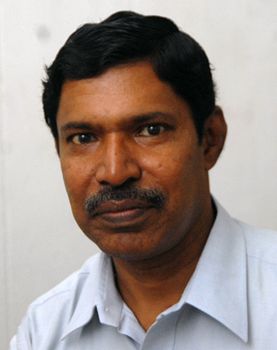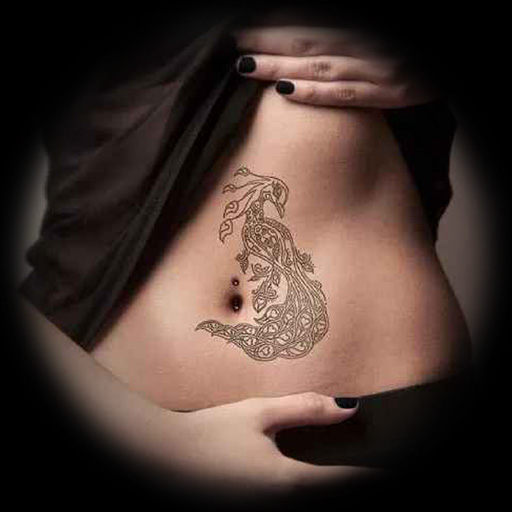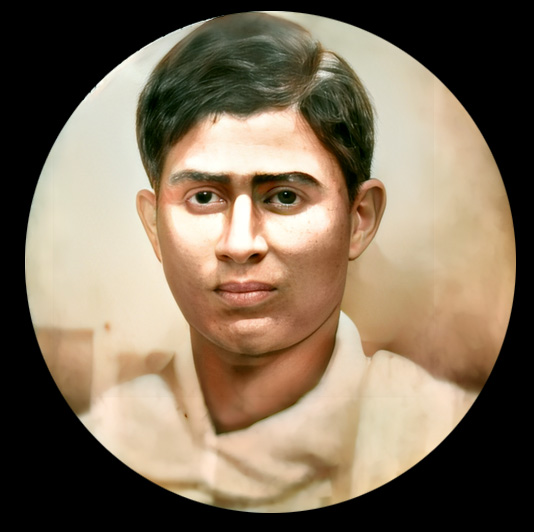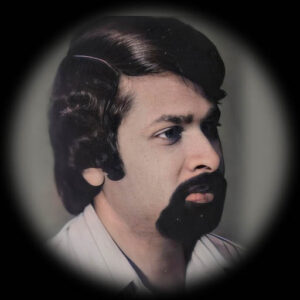Jolly Murder Case (1984)
A priest of the Orthodox Church, Fr. There was an incident where George Cherian (Ravi Achan) was arrested and jailed in connection with the Jolly murder case.
Jolly Mathew, a college student, was killed while trying to sexually assault her.
On April 23, 1984, Jolly Mathew, an eighteen-year-old girl, was found dead in Bathani Ashram, Kottayam.
Malankara Orthodox Church priest Fr. George Cherian was also arrested. It led to many controversies. The case was investigated by CB Mathews. In his book Nirbhayam, the incidents related to this case are underlined. It also mentions the names of many people who tried to sabotage the case and tried to influence it. These are the facts he clarifies regarding Jolly Mathew’s murder.

Initially, the local police was tasked with investigating the Jolly murder case. Protests and demonstrations became frequent as the arrest of the accused was delayed. Moreover, the Christian churches came out with protests and made the government responsible.
K. Karunakaran was the Chief Minister at that time. Vayalar Ravi was the Home Minister. As the protests intensified, the police chiefs decided to leave the local police and hand over the investigation of the case to CB Mathew. CB Mathew reluctantly decides to take up the case.

College student Jolly Mathew’s body was found tied in a sack from a well in a deserted backyard. First the local police and then Ernakulam crime branch police superintendent P.J. This is a case that Mathew also investigated. In the investigation, an inmate of Bathani Ashram, Fr. Thomas was taken into custody. He was interrogated for a few days but no clear evidence was found. The bishops and people of the Syrian Orthodox Church protested for his release.
On the day of the charge, CB Mathews arrived at Chingavanam at 6 pm. The Archbishop of Canaan, Mar Clemese, is standing on the stage giving a sermon. Skaria Thomas, a politician, was also there.
The murdered girl, Jolly Mathew, belonged to the Canaanite Jacobite congregation. That is why the protest was organized in Chingavanam under the leadership of Knanaya Sabha Meladhaksha. Fr. The release of Thomas and the arrival of a new investigation team were presented as big news. It was decided to start the investigation the next day.
Jolly Mathew was a first year BA student of Natakam Government College. Appan is a clerk at Fact Fertilizer Depot in Chingavanath. Jolly Mathew’s family consists of his sister Molamma and Monachan who is unemployed after 10th class.

There are those who bought the hall ticket for the first year examination and got off at Mandiram Junction in the bus. No one is known to have seen it after that.
After getting down at Mandiram Junction on MC Road and after a hundred meters, take a left turn. Walk for 50 meters and then turn left. On the left side of that bend is a house where some students of Homeo College were staying on rent. If you walk for 500 meters through the left turn, you will reach Jolly Mathew’s house. In between, Bathani Ashram is located on the right side. Instead of turning the curve to Joli Mathew’s house, walk straight for about 200 meters, turn right and after one kilometer, Joseph’s house at Kaita is on the right side. An unused house well lies a little behind that house; Jolly Mathew’s body was found there.
The investigation team also proceeded on the same route as Jolly Mathew. The investigation team stopped near the house where the students of Homeo College were staying on rent. As part of the investigation, the local police took these students into custody and tried to trace them through torture. The local police also grabbed and beat up their teacher who prevented their arrest by asking them not to be taken away. In the end, he was released saying there was no evidence.
CB Mathews also questioned the college students. They were convinced that they were innocent, even though no charges were taken. The subsequent investigation was to prepare a list of young men and women who were on that route, inquire about them and interrogate them. DySP Mohammad Khan, Ramakrishna Kurup, K.K. Joshua and Ashok Kumar were present.
The investigation team was camping in a school building. Puthupally MLA and Orthodox Church member Oommen Chandy had come there unexpectedly a couple of times.

He came to know the progress of the investigation. CB had called Mathew and inquired about the matter. It was a case that would have affected Oommen Chandy’s political future if the accused were not arrested. He was a member of the Syrian Orthodox Church and other members of the community accused him of obstructing the investigation. The murdered Jolly Mathew belonged to the Canaanite sect of the Jacobite Church. This sect was strong in Chingavanam and Kurichi regions.
C.B. Mathews says in his book that Oommen Chandy paid special attention to this case but never once asked anyone to be suspicious or save anyone. He was offering the necessary assistance for the proper conduct of the investigation.
A few days after taking up the investigation, the Kottayam Collector called and inquired about the investigation. He didn’t like being told that he had no clue. On the second call, the collector expressed it.
Are you not taking it seriously enough? was his question. The collector was not amused by CB’s reply that he was investigating without even going to his house.
He continued angrily, “You catch somebody, Mr. Avoid stress for the time being. If there is no evidence, let him go… If he is not accused when he reaches the court, he will escape…
CB Mathews says that he cannot accept this approach of the Collector. C.B. Mathews was very angry that an officer told him to make false evidence against someone who was innocent. It was not answered at that time. Proceeded with the investigation.
Houses on the roadside were searched. Sahadeva lives on the opposite side of the left turn to Jolly Mathew’s house. CB and his team reached Sahadeva’s house to investigate. Sahadeva was questioned. He said contradictory things.
Sahadeva was kept under observation. One night, one of the investigation team went to Sahadeva’s house asking for drinking water. Sahadeva took a knife and stabbed himself to meet the police.
The only way is for Sahadeva to stab himself out of guilt!
There was a lot of doubt in the group. Sahadeva’s behavior of never sticking to what he said only added to the doubt. From observing Sahadeva continuously, I realized one thing, Sahadeva is a poor man who is afraid of the police and only utters mistakes in his mouth. Afraid of being punished for a crime he did not commit, he took a knife and stabbed himself. Sahadeva was slowly removed from investigative surveillance.
Ramakrishna Kurup has directed that the investigation should be extended to the road where Jolly Mathew’s body was found. Everyone felt that was a possibility too. Thus Kuruppa himself found an important clue.
It was a piece of a lungi which was used to bind the dead body.
The lungi found in Kochunanu’s backyard bears a resemblance to the lungi used to tie the dead body. The analogy is with the thread. Kochunan, a laborer, looks healthy. Kochunanu has two sons.
Earlier, when Crime Branch arrested Thomas Achan of Bathani, there was a protest and the investigation team was changed. We are going the same route now. Shouldn’t it lead to a big protest again… If we arrest the said Kochu Nanu and his children as suspects, no one will object. And the Church will be a great thing for us.
That’s right, Ramakrishna Kurup’s face lit up as if CB Mathews had just got an idea.
In short, CB Mathews said, “Many will be clapping.” But CB Mathew’s position was that they cannot gain anything by trapping those three innocent people.
The investigation team decided to focus on Bathani Ashram itself. A crucial piece of evidence was found almost a week after taking up the investigation.
On the left side of the road to Jolly’s house was a cassava plantation. An investigation was also conducted in that. At that time a hole was noticed among the tapioca. The hole was intended to be four feet long. The photograph of Jolie’s dead body came to mind like a flash. The dead body was lying with its legs folded and tied to the chest. If so, the body would be less than four feet long. After guarding the pit, the DIG was called and informed. The hair found by the forensic experts was packed in the presence of the witnesses and sent to the lab through the court.
The investigation team is convinced that Jolly’s body may have been hidden in this pit as a temporary hiding place or as part of a cover-up attempt to be thrown in a well.
This discovery was of great importance. Fr., who was arrested on suspicion of being the accused, is right next to this cassava plantation. Bathani Ashram where Thomas lived. There are no walls in the boundary between the cassava plantation and the ashram. There is only a small fence.
At the same time another piece of information was received. When Ponnappan, a laborer was interrogated, his statement was that he saw Jolly Mathew going up to Bathani Ashram on the day of the incident.
The next day, with the permission of the DIG, the investigation team entered the Bathani ashram premises.
Fr. who was taken into police custody earlier. Thomas was there. Father cooperated with CB and his team. He spoke about Bathani Ashram and its inmates. There are two priests here.
There is a guesthouse attached to the ashram. It has two rooms. No one lives there now. He told the same thing to the earlier investigation team. The ashram and its premises were re-inspected.
The two-room guesthouse is closed.
Again in Bathani Ashram, Fr. Approached Thomas.
All we knew was about that closed guesthouse.
Fr said that no one lives there now. Thomas’ position.
Father Thomas said that Krishnan Kutty and a young priest, who were working at the ashram, lived in those rooms.
The young priest was Raviachan, who was also a student of Homeo College. Krishnankutty is a mason who came to repair the ashram. Both of them went home in the afternoon on the day Jolly Mathew was killed. Haven’t been here since.
The room was then examined by forensic experts. Many people were called to testify as witnesses for the inspection, but all of them refused. They were all Christians. Sreedharan, who was watching this, came forward, I will come as a witness. I can come to any court sir. Sreedharan replied.
Sreedharan’s announcement cheered the group as witnesses were important. When he, a Communist Party supporter, showed his courage, another person later came to testify.
Raviachan’s room was the first to open. A basket was found hidden near one corner of the room. From the bottom of the basket black ants move in rows. Dr. Muralidharan Pillai asked Sreedharan to take the basket and move it. He changed it. At the bottom I saw some food residue, acid, something like that. Dr. Muralidharan Pillai checked with the lens. Something is biological matter. Not food.
All the rest were collected and wrapped in cello foil paper and sent for lab test with the signatures of the witnesses. Hair suspected to belong to women was also collected from the priest’s room.
After the laboratory test, the object recovered from the room was identified as vomit residue.
The next goal was to meet the doctor who conducted the post-mortem examination of Jolie’s body at the medical college and take a detailed statement.
He said that the death was due to suffocation when another person pressed his neck hard and closed his nose and mouth and could not breathe and there was a strong pressure on the vagus nerve in the neck.
Vomiting and excrement may occur at the time of death. He also gave a sample of Jolie’s hair taken during the post-mortem examination to the investigating team.
In the photograph where the body was lying, the body was lying with legs and arms folded and tied to the chest with a lungi. When he saw this knot, S.I. Radhakrishnan had told about the uniqueness of that knot. It is a bullock’s bundle. Radhakrishnan knew that the bullock cart would be tied in the same way. From all this it was found that more people were assisted in the murder or later in hiding the body.

In the investigation to see if anyone else had gone missing on that day, it was learned that Kunju Kunjyu, who had been a helper in everything at Bathani Ashram, was also missing. He used to be a bullock driver.
Three people suspected of having done the right thing have been found. All three of them left the place that day.
Who would have committed the murder? If Krishnankutty, a craftsman, or Kunju Kunju, who was a bullock driver, did it correctly, Fr. John doesn’t need to help. But if Raviachan does the right thing, there is a possibility that the other two will help in destroying the evidence.
So finally things came to Raviachan.
After taking the hair from Bathani Ashram and from the cassava yard and examining it with the sample taken during the post-mortem, Jolly was convinced that it was Mathew’s, and permission was sought to arrest him.
DGP M.K. Joseph puffed on a triple five cigarette and said nonchalantly, “If you are absolutely convinced Fr. M.K said that John should be arrested. Joseph’s position.
In the following days, the investigation team reached Kollam. In the bishop’s house of His Holiness Kurylos. Raviachan was there. When they said that they wanted to send him with them for questioning, the bishop’s reply was that they should go and let the case proceed.
He was fully cooperating in the interrogation. Jolie said with a firm belief that she knew Mathew. On that day he came to him with a hall ticket. He said that it is an exam and he should pray for her. Prayed. After that she went home.
Where was Father when Jolly Mathew came up to Bathani Ashram?
The Father answered as if the question had been expected, as if he wanted it to be said. Didn’t you see a half wall of the guesthouse then? Nah.. I was studying there.
CB asked an unexpected question when he heard the answer of the father who seemed to have no panic or doubt.
“How about this Krishnankutty? Does he help Father with all his affairs?”
“Isn’t Krishnankutty a mason there? He lived in the room next to mine. Then there are some of the rituals in Bathani Ashram. All things including their own room and food should be done by the respective people. No one was hired even to prepare food. His rule is to do everything yourself.”
One thing was understood from questioning Father. That you have received proper legal advice on what to say and how to say it. Fr. It may have been done on the assumption that the police would have an eye on Bathani Ashram after Thomas was arrested.
He did not say that he did not know Jolly Mathew or that he had not seen him that day. Jolly’s forced statement that he saw Mathew sitting on the half wall of the guesthouse while studying was a mental defense to confirm that he did not go to the room, but he answered that he did not go to the room even though he was asked about the events in the room.
The answer was tactful.
He said Jolly Mathew went home after the prayer. There is currently little chance of any emergency occurring on the way home from Bathani Ashram.
Although Raviachan said many things strategically, this was too much for the investigation team.
Raviachan may not have known about the well in Joseph’s field at Kaita. It is impossible to dig a hole in a cassava plantation alone. It is not possible to tie the dead body alone. The group’s assessment was that the help of master Krishnankutty and Kunjukunj was sought for that reason.
He decided to arrest Raviachan himself. The local police were monitoring the special investigation team and leaking information to their opponents. Therefore, it was decided that the accused should be produced in the Kottayam court and taken to Atur. That night, he went to Kottayam and prepared the documents that Raviachan was arrested at Atur and organized the remand application and so on.
Next morning Inspector Ashok Kumar in the team was sent to Kottayam court premises in a jeep. A number of policemen were also brought from the reserve camp and sent there for duty. With that, journalists, photographers, Orthodox church leaders and lawyers gathered in front of the court in Kottayam.
CB and others went to Atur in a private vehicle along with Raviachan. When he was produced before the magistrate, the magistrate asked the father, “Do you have a complaint of harassment by the police?” asked. “No” was the father’s reply. Father was remanded to Subjail.
Not knowing this, those who camped in Kottayam were disappointed.
Some lawyers and some church leaders consulted about what should be done if Kottayam was brought to court.
“Is there a complaint of harassment by the magistrate?” Preparations were made to say “Yes” to the question.
It was also heard that there was a plan to create trouble while being produced before the magistrate. Adv for Fr. Mathew Edikula and M. for the second and third defendants. Thomas also appeared in the court. Kunjirama Menon appeared for the prosecution.
Kottayam District Judge A.R. The case came up for trial before Vijayan. They were making every effort to influence the witnesses and kidnap them to prevent them from appearing during the trial. It had all the help of some officials of the district police. was defending it.
The investigation team settled at the Kottayam Police Club.
Raviachan was sentenced to life imprisonment and his co-accused Kunju Kunj and Krishnankutty were sentenced to seven years in prison each.
It became a big news in the newspapers.
But CB Mathews says in the book that instead of appreciation, he was met with controversies and resentful treatment by a community.
The defendant appealed. At the High Court, Adv. CB Mathews says in the book that he wanted to argue with Kunhirama Menon, but that did not happen.
Finally, the High Court acquitted the accused.
The government showed no interest in appealing to the Supreme Court. His method was to walk behind and punish the accused. But those on the opposite side are powerful and influential. He did not have the strength to overcome them. The Jolly Mathew murder case ends by saying that the government was also with the defendant.
Credit: CB Mathews, Nirbhayam, Green Books.







